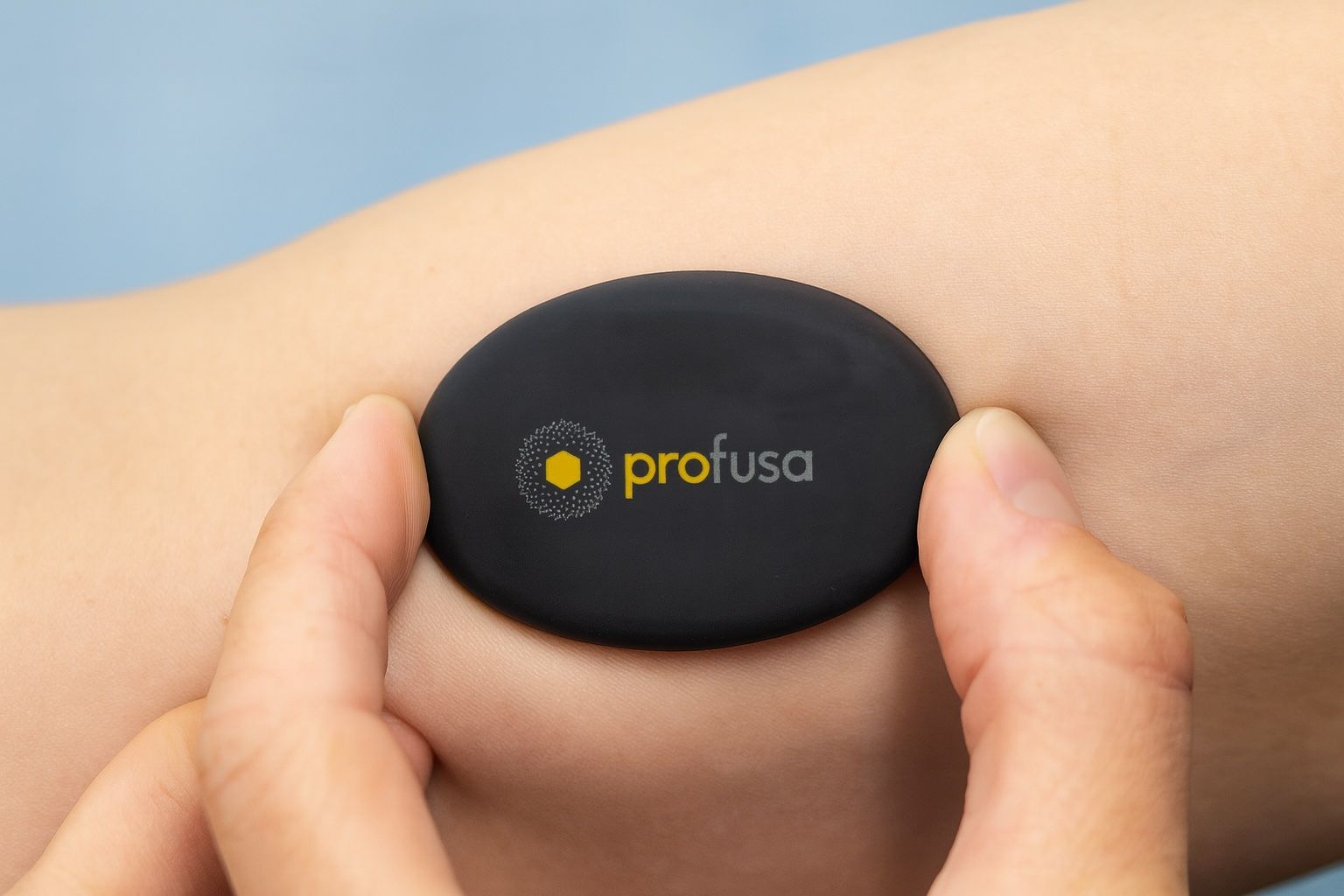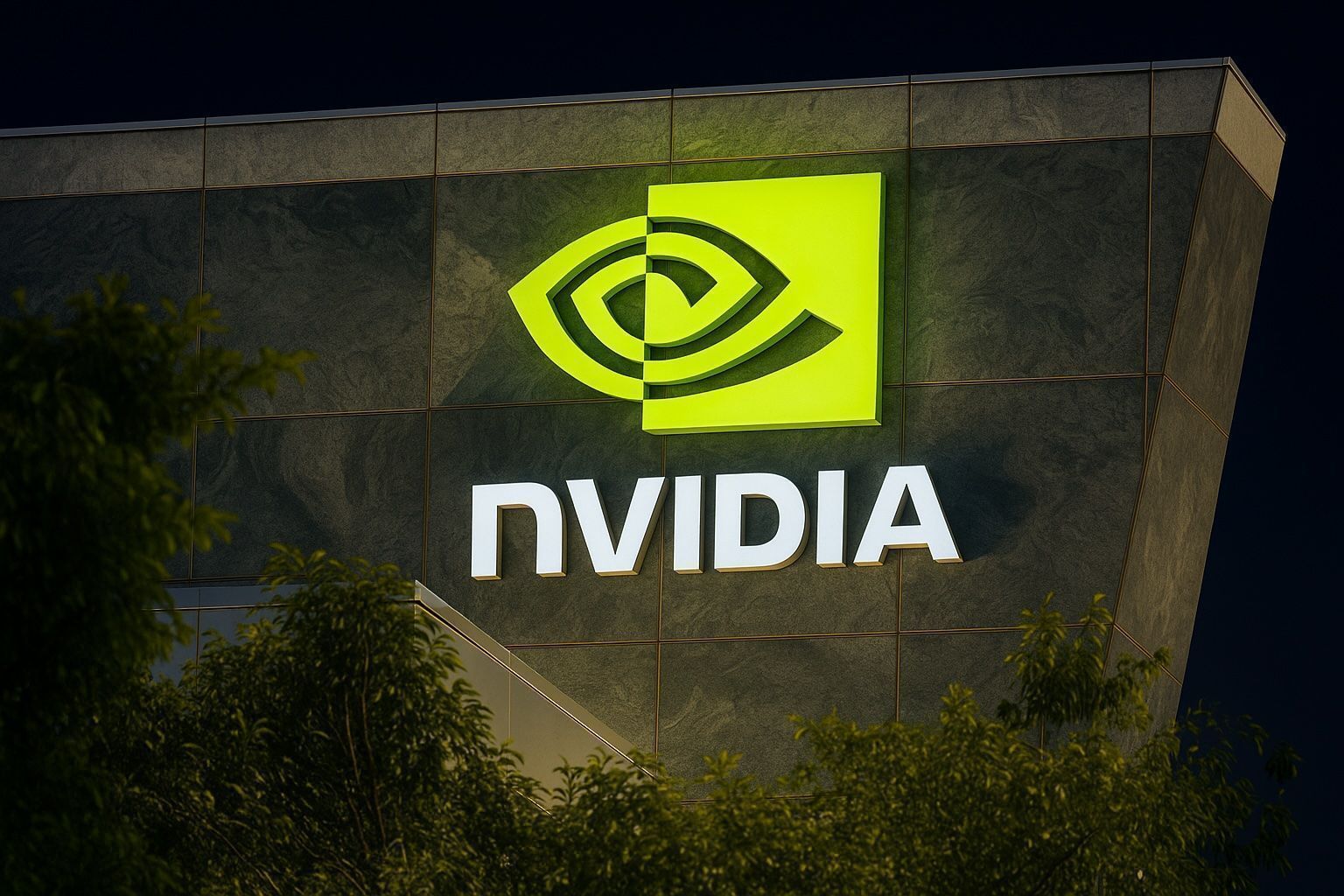- Profusa (NASDAQ: PFSA) shares jumped over 36% to around $0.40 in after-hours trading on Oct. 28 after the company announced major manufacturing milestones and new distribution deals [1] [2].
- The embattled biotech, which focuses on tissue-integrated health sensors, unveiled a doubled production capacity for its Lumee™ oxygen monitoring platform and confirmed partnerships covering 35% of its European target market [3] [4].
- PFSA stock had plunged ~97% in value over the past six months amid minimal revenue and liquidity woes [5], but the latest news sparked a speculative rally – though the penny stock remains highly volatile with ~10% daily price swings on average [6].
- Financial experts caution that Profusa’s outlook is still high-risk: the company has virtually no current sales and recently received a Nasdaq compliance warning for low market value [7], even as it secured a $100 million equity credit line for funding [8].
- Big picture: Investor sentiment on small-cap biotech and wearables is improving, with rising demand for continuous health monitoring [9]. But market confidence in Profusa will hinge on executing its 2026 sales plan and overcoming steep challenges in a competitive health sensor arena.
Milestone News: Manufacturing Boost and European Deals
Profusa’s after-hours surge came on the heels of a positive company update. The California-based digital health firm announced it has completed key manufacturing initiatives, creating enough production capacity to supply more than twice the units needed to meet its 2026 revenue goals for the Lumee™ continuous oxygen sensor system [10]. Fred Knechtel, Profusa’s CFO, said the team is “laser-focused on achieving revenue from sales of Lumee tissue oxygen monitoring systems… at the start of the second quarter of 2026,” with inventory shipments to distributors planned in Q1 2026 [11]. To support that timeline, Profusa finished the first full run of sensor production in October and even began production of its Lumee injector “pens,” according to the update [12].
The Wireless Lumee Oxygen Platform includes a tiny injected biosensor and a low-profile patch that reads the sensor’s signal and transmits data wirelessly [13].
Alongside the manufacturing ramp-up, Profusa revealed new distribution partnerships in Europe. The company is teaming with medical distributors AngioPro and Dismeval, which together cover roughly 35% of procedures in the European market for critical limb-threatening ischemia (CLTI) – a key initial application for the Lumee oxygen monitor [14]. Profusa estimates there are over 700,000 CLTI-related procedures annually in Europe [15], underscoring a sizeable addressable market if its technology gains traction.
The announcements suggest Profusa is on schedule to commercialize the Lumee™ Oxygen Platform by early 2026, marking a pivotal transition from R&D to revenue generation. “Our manufacturing and supply chain projects are on track to provide inventory to our distributors in the first quarter of 2026 to support 2026 revenue projections,” noted CFO Knechtel in the press release [16]. CEO Ben Hwang added that growing interest from clinical partners gives the company “positive momentum” toward meeting an unmet need in continuous tissue oxygen monitoring [17].
PFSA Stock Rebounds After Steep Decline
Wall Street reacted swiftly to Profusa’s updates. PFSA stock, which closed Tuesday (Oct. 28) at $0.29, rocketed to around $0.40 in post-market trading, a +36% move in a matter of hours [18]. The spike suggests investors saw the 2026 sales roadmap and distributor deals as potential green shoots for a company that has so far had no commercial revenue. By Wednesday morning, Profusa’s share price hovered near $0.407 [19], still up significantly from the prior day’s close.
This rally is a rare piece of good news for long-battered PFSA shareholders. Since debuting on Nasdaq in mid-2025 via a merger, Profusa’s stock has been on a disastrous slide, losing over 97% of its value in six months [20]. In fact, the stock traded as high as $2.40 in the past year but hit a low of about $0.26 before the latest bounce [21]. At one point in September, PFSA briefly surged on speculative volume – jumping ~74% in a single day [22] – but those gains quickly evaporated as the stock spiraled to penny-stock levels.
Even after its after-hours jump, Profusa’s market capitalization remains tiny (around $12–17 million) [23] [24], reflecting the company’s nascent stage and heavy dilution. Trading in PFSA also continues to be highly volatile. On a typical day recently, the share price has swung by 10% or more intraday, a sign of low liquidity and jittery sentiment [25] [26]. Analysts note that such extreme volatility – PFSA’s average daily range is ~9–10% [27] – means the stock can be whipsawed by speculative trading or news developments. Short-term traders appear to be active in the name, as evidenced by a sudden volume spike to 57.8 million shares (versus ~9.8M average) around recent news [28] [29].
Financial Woes and Strategic Lifelines
Profusa’s core challenge is financial sustainability. The company remains essentially pre-revenue, with only minimal pilot sales reported. In the first half of 2025, Profusa posted a net loss of $9.3 million [30] [31] while generating well under $0.1 million in revenue [32]. Operating costs and hefty non-cash charges (from warrant and convertible note liabilities) have led to continued quarterly losses. This trajectory raised a going concern red flag in filings [33] [34] – essentially an indication that the company might lack the cash to survive another 12 months without additional capital.
To shore up its finances, Profusa has taken some unconventional and dilutive steps. Earlier in October, shareholders approved a $100 million equity line of credit with Ascent Partners Fund, giving Profusa the right to sell shares periodically to raise cash [35]. This arrangement could be a double-edged sword: it provides a funding backstop but at the cost of significant future dilution if the company issues shares at these low prices. Profusa also restructured a convertible note with Ascent into multiple tranches to stagger its financing needs [36].
Another headline-grabbing move: Profusa decided to invest part of its treasury in Bitcoin. The company put a second $1 million tranche into digital assets this month as a hedge against macroeconomic risks [37]. While unusual for a tiny medtech, management described this crypto strategy as “low cost [and] capital efficient” in protecting its balance sheet [38]. However, with the stock down 97% year-to-date and a weak financial health score by InvestingPro, some observers saw the Bitcoin bet as a desperate attempt to diversify assets [39].
Profusa’s cash crunch has already drawn scrutiny from Nasdaq. The company disclosed receiving notices from Nasdaq for failing to meet listing standards – specifically for minimum market value of listed shares [40]. With its market cap languishing in the teens of millions (well below Nasdaq’s typical $35M threshold), Profusa likely faces a ticking clock to boost its valuation or risk delisting. The recent stock pop, if sustained, could help, but it may not be enough without broader investor confidence.
On a brighter note, Profusa has been bolstering its leadership and clinical network. It recently appointed Peter O’Rourke – former Acting U.S. Secretary of Veterans Affairs – as lead independent director on its board [41], aiming to strengthen oversight and partnerships (the VA connection could be valuable for healthcare tech adoption). The company also highlighted that a leading vascular surgeon in France will be incorporating Lumee sensors in a clinical study on peripheral artery disease [42]. These steps signal Profusa’s intent to navigate regulatory and medical communities, even as it struggles on the financial front.
Expert Analysis and Market Sentiment
Despite this week’s encouraging news, analyst sentiment on PFSA remains guarded. There is currently no Wall Street coverage or consensus price target for Profusa [43], which is typical for a micro-cap stock. The lack of analyst forecasts underscores that many institutional investors have steered clear of PFSA so far, given its penny-stock status and uncertainty.
Technical analysis also paints a cautious picture. Before the latest jump, PFSA had been in a steady downtrend, with “few to no positive signals” on its chart, according to StockInvest’s AI-based analyst [44]. The stock has fallen in 6 of the last 10 trading days and was flagged as a “sell” candidate since early October [45]. Even after the bounce, momentum indicators remain mostly bearish. Benzinga’s analytics, for example, note that PFSA has a negative price trend across all measured time frames [46]. In plain terms, the long, medium, and short-term trends have all been pointing down, and it will take more sustained buying to reverse those trends.
Market observers warn that execution risk is high for Profusa. The company’s press releases emphasize future revenue projections and technical capacity, but critics point out the lack of actual sales or proven market adoption to date. “The press release heavily emphasizes manufacturing capacity over actual market readiness or sales,” one analysis noted, suggesting uncertainty about customer uptake of the Lumee sensor until real-world orders materialize [47]. Forward-looking statements about hitting 2026 targets are just that – forward-looking. As with any development-stage biotech, there is no guarantee Profusa can convert its technology into a sustainable revenue stream.
Financial experts also highlight that Profusa’s balance sheet remains fragile. Cash was under $2 million as of mid-2025 [48], and though the new credit line can inject capital, each draw will likely add to the share count. If the stock price stays depressed, dilution could severely impact existing shareholders. “This is a classic high-risk, high-reward situation,” says one commentator on an investment forum, “They need to survive long enough to commercialize – if they do, the stock could rerate higher, but they could also run out of money or get delisted before then.”
For now, market sentiment is mixed. The after-hours surge indicates some speculative traders are betting this could mark a turning point. On the other hand, short sellers have not targeted PFSA heavily (short interest is only ~2.8% of float [49]), possibly because the stock is already so beaten down. No clear bull or bear consensus has emerged; instead, PFSA trades more on news bursts and day-trader interest than on fundamentals. The true test will come as we approach Profusa’s Q3 earnings report on November 20, 2025 [50], where investors will scrutinize its cash burn and any updates on the Lumee launch timeline.
Sector Outlook and Competitor Context
Profusa operates at the intersection of biotechnology, medical devices, and wearable health tech – sectors that have seen both exciting innovation and volatile stock performances. The concept of continuous health monitoring is a growing trend globally. In fact, the wearable health sensors market is valued at about $1.8 billion in 2025 and projected to more than double to $3.9 billion by 2030 [51], reflecting a robust ~16.5% CAGR as healthcare shifts toward remote patient monitoring and personalized data. Profusa’s Lumee platform, which provides real-time biochemical data, is aligned with this trend of moving from episodic measurements to continuous, actionable health insights.
However, competition is fierce in the broad wearables and biosensor arena. Big players like Dexcom and Abbott have revolutionized diabetes care with continuous glucose monitors, while consumer giants like Apple and Fitbit have popularized wearable devices that track vitals. Profusa is targeting a niche – continuous tissue oxygen monitoring – primarily for medical use in conditions like peripheral artery disease. In this space, its technology is quite novel (few rivals offer implantable oxygen sensors), but it will need to educate the market on the Lumee system’s benefits. There may also be indirect competition from existing tools like noninvasive oximeters or imaging-based perfusion assessments, which clinicians are more familiar with.
Among micro-cap peers, extreme volatility is common when news hits. Profusa’s sharp rally is reminiscent of other small biotech stocks that have seesawed on breakthroughs or setbacks. For example, earlier this month Femasys (NASDAQ: FEMY) – another sub-$1 biotech – surged over 45% in one day after announcing progress in its fertility tech pipeline [52]. Such outsized moves underscore how speculative and news-driven this end of the market can be. Failure to meet milestones can just as easily send these stocks crashing, as seen with numerous SPAC-merger biotech companies over the past two years.
It’s also worth noting that the overall biotech sector sentiment improved in October. The Nasdaq Biotechnology Index rallied to a one-year high in early October [53] amid renewed risk appetite, and investors have been bargain-hunting select healthcare names after a brutal 2022–2023. This macro uptick perhaps created a slightly more favorable backdrop for PFSA’s news to be received. Still, investors will compare Profusa’s prospects against hundreds of other biotech stories – and only sustained execution will make it stand out.
Looking Ahead
Going forward, Profusa faces a critical stretch on its road to commercialization. The company must navigate the next year with tight resources, likely relying on the Ascent Partners equity facility to fund operations. Each quarterly earnings release (with the next on Nov. 20, 2025 [54]) will be closely watched for updates on cash runway and any pilot revenues or partnerships. Profusa will also need to address the Nasdaq listing compliance issue – possibly through boosting its market cap or even a reverse stock split if the share price remains below $1 for too long.
On the operational front, all eyes are on the promised early 2026 product launch. Hitting that target could be a make-or-break moment. If Profusa can successfully ship Lumee sensors to distributors in Q1 2026 and generate initial Lumee™ system sales by Q2 2026, it would validate years of development and potentially attract new investment interest. Early adoption by key opinion leaders (like the French vascular study) will be crucial to build clinical credibility.
For investors, PFSA remains a high-risk, speculative stock. The recent bounce off all-time lows offers a glimmer of hope, but also serves as a reminder of how far the stock has fallen. Bulls argue that at a ~$0.40 share price, a lot of bad news is already priced in, and any tangible progress (regulatory approvals, first revenues, or takeover interest) could multiply the stock’s value. Bears counter that without substantial revenue, Profusa may dilute shareholders heavily or even fail to survive long enough to capitalize on its technology.
Bottom line: Profusa’s 36% after-hours pop shows that good news can still ignite the stock, but a sustainable turnaround will require more than one press release. The company has laid out an ambitious path to 2026 – now it must execute quarter by quarter. In the meantime, market sentiment will likely swing between cautious optimism and skepticism, keeping PFSA on a roller coaster. Investors should brace for volatility as this wearable sensor underdog fights to prove its worth in the coming year.
Sources: Profusa press release and Benzinga summary of manufacturing milestones [55] [56]; Benzinga market data on PFSA price jump and 97% six-month decline [57] [58]; Investing.com report on Bitcoin treasury strategy and Nasdaq compliance warnings [59] [60]; StockInvest.us technical analysis of PFSA (high volatility, bearish signals) [61] [62]; ts².tech market coverage of biotech/wearable sector trends [63]; ts².tech news on peer stock Femasys’s surge [64].
References
1. www.benzinga.com, 2. www.benzinga.com, 3. www.benzinga.com, 4. www.benzinga.com, 5. www.benzinga.com, 6. stockinvest.us, 7. www.investing.com, 8. www.investing.com, 9. www.mordorintelligence.com, 10. www.benzinga.com, 11. www.benzinga.com, 12. www.benzinga.com, 13. www.prnewswire.com, 14. www.benzinga.com, 15. www.benzinga.com, 16. www.quiverquant.com, 17. www.quiverquant.com, 18. www.benzinga.com, 19. www.benzinga.com, 20. www.benzinga.com, 21. www.benzinga.com, 22. stockanalysis.com, 23. www.benzinga.com, 24. www.benzinga.com, 25. stockinvest.us, 26. stockinvest.us, 27. stockinvest.us, 28. www.benzinga.com, 29. www.benzinga.com, 30. www.stocktitan.net, 31. www.stocktitan.net, 32. stockanalysis.com, 33. www.stocktitan.net, 34. www.stocktitan.net, 35. www.investing.com, 36. www.investing.com, 37. www.investing.com, 38. www.investing.com, 39. www.investing.com, 40. www.investing.com, 41. www.investing.com, 42. www.investing.com, 43. www.benzinga.com, 44. stockinvest.us, 45. stockinvest.us, 46. www.benzinga.com, 47. www.quiverquant.com, 48. www.stocktitan.net, 49. www.benzinga.com, 50. www.benzinga.com, 51. www.mordorintelligence.com, 52. ts2.tech, 53. ts2.tech, 54. www.benzinga.com, 55. www.benzinga.com, 56. www.benzinga.com, 57. www.benzinga.com, 58. www.benzinga.com, 59. www.investing.com, 60. www.investing.com, 61. stockinvest.us, 62. stockinvest.us, 63. www.mordorintelligence.com, 64. ts2.tech







